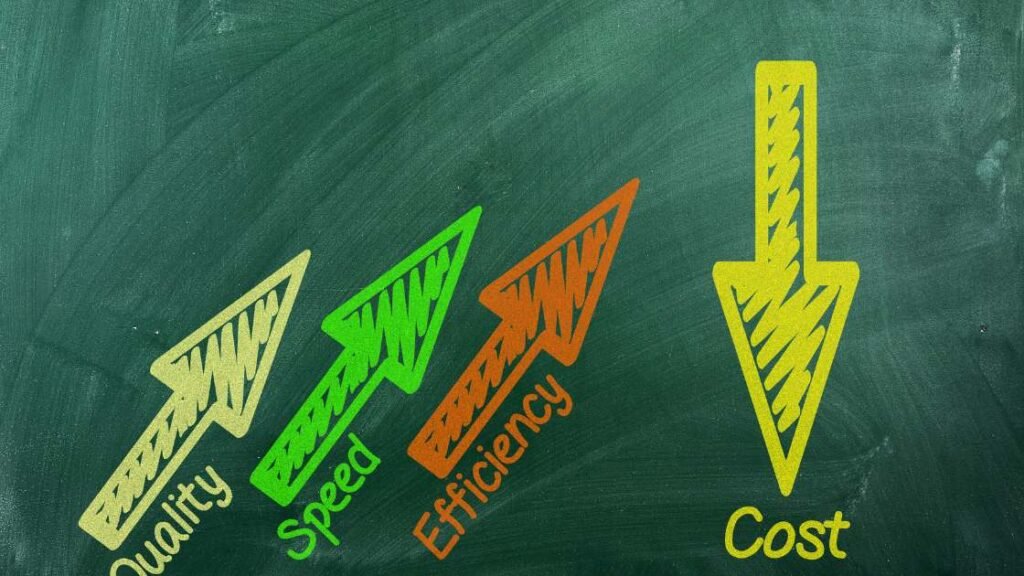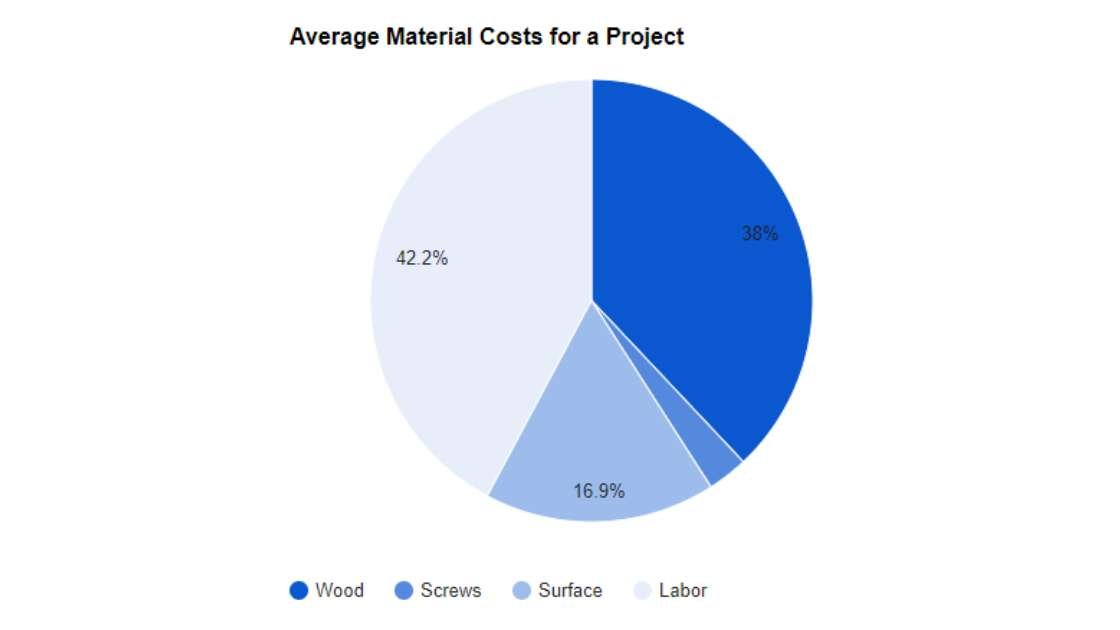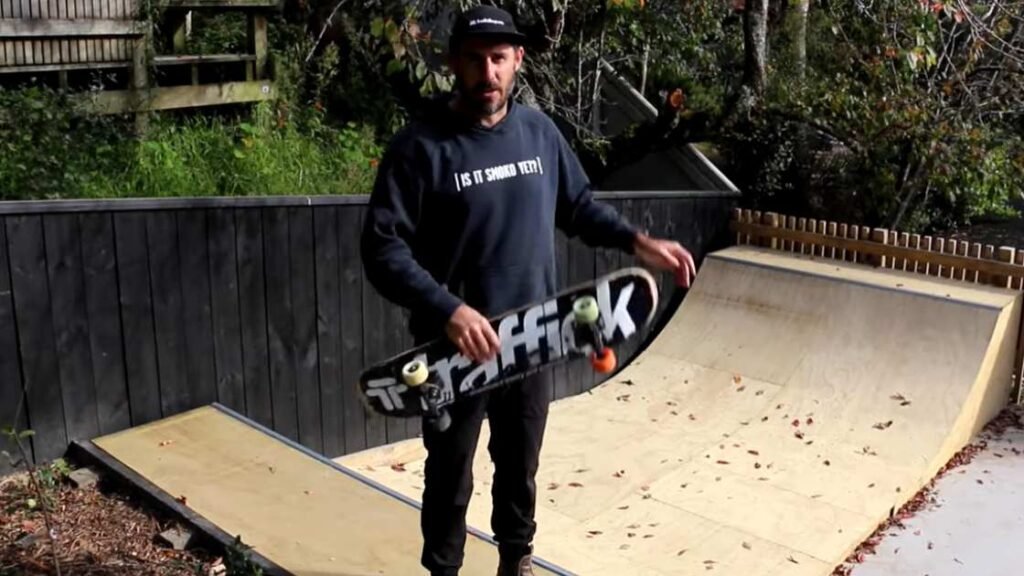As of 2025, DIY mini ramp materials for a typical 3′–4′ tall backyard build usually total $700–$2,000+ depending on size and surface. Ready-to-assemble backyard kits commonly run $2,499–$4,649+[1][2]. Choosing a pro, weatherproof surface (e.g., Skatelite or Gator Skins) adds roughly $145–$222 per 4×8 panel[3][4].
Skateboarding enthusiasts increasingly seek the thrill of having a mini ramp at home, making it a popular addition for recreation and practice. The investment creates a social hub for friends and a reliable place to build skills without a trip to the park.
The versatility of mini ramps suits different skill levels, from beginners to advanced riders. As a centerpiece of backyard entertainment or a personal training setup, a mini ramp offers a strong return on enjoyment and practical time-on-board in a safe, convenient space.
Careful budgeting and planning will help you meet your space and riding goals while staying within budget. Here’s what affects the answer to “How much does it cost to build a mini ramp?”

The Appeal Of Mini Ramps
Mini ramps spark joy among skaters of all ages. Compact, versatile, and fun, these structures allow skaters to practice tricks and enjoy the ride at home. Whether you’re a newbie or a pro, a mini ramp provides endless entertainment and a rewarding place to learn new skills.
Growing Skate Culture
Skateboarding’s popularity continues to spread, and mini ramps help anchor local scenes by giving skaters a place to gather and progress together.
Personal Vs. Community Use
Deciding on a mini ramp often starts with choosing between personal use and a community build. Personal mini ramps maximize convenience—you can ride anytime. Community ramps invite broader access and youth engagement. Consider:
- Space: Backyard footprint vs. shared area
- Cost: Solo investment vs. pooled funds
- Access: Private sessions vs. open-to-all
Factors Influencing Mini Ramp Costs

Thinking about building a mini ramp at home? It’s vital to know what factors affect the budget. From wood quality to width, height, and surface, several elements determine the final price tag.
Material Choices
Material choices greatly influence costs. Common picks include:
- Plywood. Budget-friendlier; exterior grades last longer outdoors.
- Skatelite or Gator Skins. Weather-resistant pro surfaces that cost more up front but extend lifespan[3][4].
- Galvanized steel coping. Standard for grindable edges.
Choosing premium surfaces improves durability and ride quality but increases material spend.
Size And Complexity
Dimensions directly affect cost.
| Width | Wider ramps use more framing and surface sheets. |
|---|---|
| Height | Taller ramps need more structure and sheathing. |
| Features | Spines, extensions, and decks add complexity and cost. |
Simpler, 8′–12′ wide designs are lighter on budgets than complex builds with extensions.
Labor And DIY
DIY vs. pro labor changes the budget.
- Professional builders: Faster, warrantied work—but higher labor cost.
- DIY: Saves labor if you have time, tools, and carpentry skills.
Factor in your time and the risk of rework when comparing options.
Material Costs Breakdown

Every sheet, stick, and fastener affects the total. Here are the main categories:
Wood And Steel
- Plywood layers: Typically two structural layers plus a top skin (plywood or a pro surface).
- 2×4 framing: Spaced ~8″ on center in transitions and flat; quantity scales with width and length.
- Steel coping: 2⅜″ OD schedule 40/80 pipe for each lip.
Weatherproof Surfaces (Optional)
Upgrading to a ramp-specific surface increases cost but protects the ramp outdoors:
- Skatelite Pro 4×8 panels: about $222 per sheet (retail)[3]
- Gator Skins 4×8 panels: about $145 per sheet (plus shipping)[4]
- Many 3′×8′ mini ramps need ~6 sheets for a full pro surface[5].
Tools And Hardware
| Tools | Hardware |
|---|---|
| Circular saw, drill/driver, jig saw, sander | Exterior screws (#8 1⅝″ and 2½″), bolts/washers |
| Measuring/marking (tape, chalk line, square) | Galvanized steel pipe for coping |
| Optional: miter saw | Sealants/paint as needed |
Note: Plywood and dimensional lumber pricing varies by region and store; check local retailers for current pricing.
Labor Costs Explained

Building a mini ramp is rewarding. Understanding labor is key to planning time and budget.
Professional Builders Vs. DIY
Pros bring expertise, speed, and insurance. DIY can save cash if you’re comfortable with carpentry and have the tools.
- Professional builders: Higher upfront cost; predictable timeline and quality.
- DIY approach: Lower labor spend; requires significant personal time.
Time Investment
Pros often finish a simple backyard kit in a few days; DIY builds can take multiple weekends depending on complexity and crew size.
- Be realistic about available build time.
- Compare to pro timelines.
- Include the opportunity cost of your time.
Safety And Liability
Pros typically carry insurance; DIYers assume responsibility. Work safely and follow local codes. If anchoring or digging footings, contact 811 before you dig in the U.S.[8][9]
| Aspect | Professional Builder | DIY |
|---|---|---|
| Insurance | Covered by builder’s policy | Homeowner assumes risk |
| Safety measures | Industry standards | Personal responsibility |
| Potential liability | Limited | Increased risk |
Additional Expenses
Beyond lumber and screws, plan for the “extras” that keep your ramp safe and durable.
Permits And Legalities
Local rules matter. Check zoning, HOA, and permit requirements. If adding footings or trenching, call 811 first to locate utilities[8][9].
Maintenance And Upkeep
- Wood protection: Exterior paint or sealants for exposed plywood.
- Surface repairs: Replace cracked sheets; tighten hardware.
- Drainage: Keep water from pooling under or on the ramp.
Accessories And Extras
| Accessory | Use | Estimated Cost |
|---|---|---|
| Skate paint | Adds traction & seals plywood | $30–$100 |
| Railings | Safety on decks | $50–$200 |
| Lights | Night sessions | $20–$100 |
Cost-saving Tips
Smart choices stretch your budget without compromising safety.
Reclaimed Materials
- Check reuse centers and marketplaces for discounted wood and metal.
- Inspect reclaimed materials for straightness and integrity.
Community Volunteers
- Trade skills and organize a build day with friends.
Phased Building
- Build the basic structure first.
- Add extensions/pro surfaces later.
- Ride sooner—upgrade over time.
Real-world Mini Ramp Budgets
Costs vary with width, height, and surface choice. These snapshots help frame expectations.
Case Studies
- DIY (8′ wide): A classic 3′-tall, 8′-wide plan uses ~53 pieces of 2×4 plus plywood layers and coping[6].
- DIY (12′ wide): A 3.5′×12′ build used ~90 pieces of 2×4 and came in under $2,000 (late-2022 materials)[7].
- Kit (8′–12′ wide): Many backyard kits list from $2,499–$4,649+ depending on width and height[1][2].
Budget Analysis (as of 2025-10-01)

Typical cost components for a 3′–4′ tall, 8′–12′ wide mini ramp:
| Material | 2025 Estimate | Notes |
|---|---|---|
| Framing lumber | $150–$450 | Quantity scales with width (e.g., ~53 2×4s at 8′; ~90 at 12′)[6][7] |
| Plywood (structural layers) | $300–$900 | Varies by grade, thickness, and local pricing |
| Top surface (plywood) | $0–$250 | Using plywood only keeps costs down |
| Top surface (pro panels) | $900–$1,600+ | ~6–8 sheets for smaller ramps at $145–$222 each[3][4][5] |
| Coping/Hardware/Sealant | $120–$350 | Pipe, screws, bolts, paint/sealants |
| DIY subtotal (materials) | $700–$2,000+ | Higher if using premium surfaces |
| Kit pricing | $2,499–$4,649+ | Based on current vendor listings[1][2] |
Value Over Time
- Endless fun: Hundreds of sessions at home.
- Skill growth: Regular, convenient practice.
- Community: A gathering spot for friends.
Frequently Asked Questions Of How Much Does It Cost To Build A Mini Ramp
How do you make a homemade mini ramp?
Gather materials (plywood layers, 2×4s, coping, exterior screws). Cut transitions, frame at ~8″ on center, add the flat, then sheath with two plywood layers and a top surface (plywood, Skatelite, or Gator Skins). Add coping and seal or cover for weather resistance. See example plans and counts (8′ wide, ~53 2×4s)[6] and a 12′-wide example (~90 2×4s)[7].
How much does it cost to build a halfpipe?
For a small DIY mini halfpipe, expect about $700–$2,000+ in materials (size and surface drive the range). Backyard kits commonly list $2,499–$4,649+ as of 2025[1][2].
What is a good height for a mini ramp?
3′–4′ tall is a common, beginner-friendly range. Mini ramps are generally under 6′ tall[10], and many popular kits are offered at 3′ and 5′ heights[1].
How many 2×4s do I need for a mini ramp?
It depends on size and spacing. As a reference, a 3′-tall × 8′-wide plan uses about 53 pieces of 2×4[6]. A 3.5′-tall × 12′-wide build used ~90 pieces[7]. Your plans will specify exact counts.
Conclusion
With up-to-date pricing, realistic materials lists, and a clear plan, you can budget a mini ramp that fits your space and goals. Prioritize safety, weather protection, and surface quality—and enjoy more time on the board.
References
- OC Ramps — Halfpipe (mini ramp) kit pricing & sizes (accessed 2025-10-01). ocramps.com. Opens in a new tab
- Keen Ramps — Mini Half Pipe 3.5′ × 12′ pricing (accessed 2025-10-01). keenramps.com.
- Skatelite Pro 4×8 panel retail price (via Keen Ramps) (accessed 2025-10-01). keenramps.com.
- Gator Skins — 4×8 panel price (accessed 2025-10-01). gatorskinsramps.com.
- OC Ramps — 3′ × 8′ kit notes (6 pro-surface sheets needed) (accessed 2025-10-01). ocramps.com.
- DIYskate — 3′ mini ramp (8′ wide) plan with materials list including ~53 2×4s (PDF mirror) (accessed 2025-10-01). evangeline.hu.
- Wave Arcade — 3.5′ × 12′ example with ~90 2×4s; total under $2,000 (late-2022) (accessed 2025-10-01). wavearcade.com.
- 811 — National “Call Before You Dig” (U.S.) (accessed 2025-10-01). 811beforeyoudig.com.
- U.S. Department of Transportation — Call 811 safety note (accessed 2025-10-01). transportation.gov.
- Instructables — Mini ramp definition & 3′×12′×24′ example (accessed 2025-10-01). instructables.com.



4 thoughts on “How Much Does It Cost to Build a Mini Ramp?”
Pingback: How Much Does It Cost To Build A Gas Station? Professional Tips
Pingback: How Much Does It Cost To Build A Hotel | Unlocking The Secrets: The 7-Step Guide To Building Your Dream Hotel
Pingback: How Much Does It Cost To Straight Pipe A Truck?
Pingback: How Much Does It Cost To Build A High School Basketball Gym?